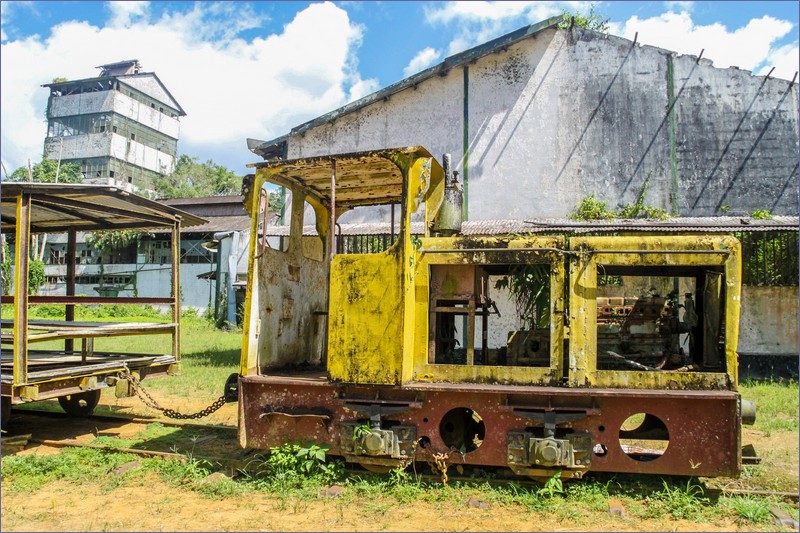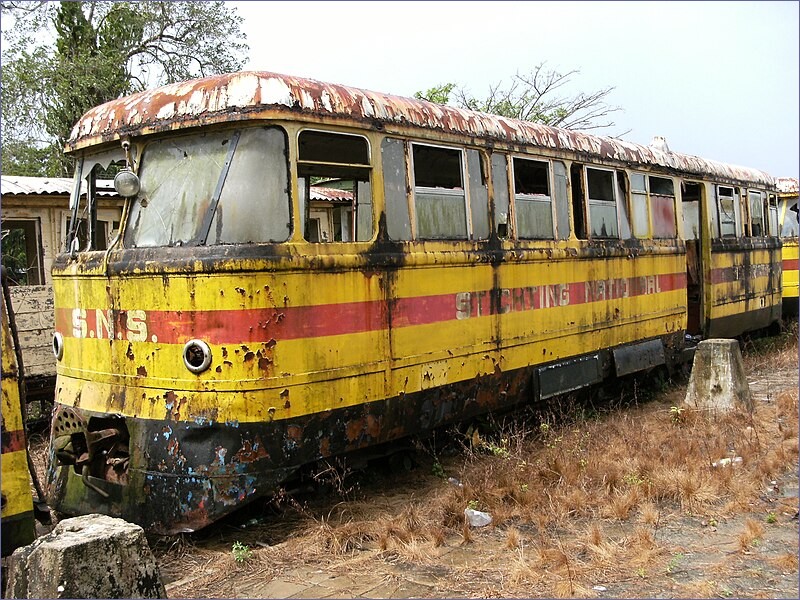Currently there are no trains in Suriname. In several places railway enthusiasts can find relics of old railway in Suriname. The country has an interesting history of the railway lines. In 2014 the government announced proposals for a rail link between the capital Paramaribo and Onverwacht with further extension to Johan Adolf Pengel International Airport in Zanderij. According to plans, the line was to be completed in 2015 The ambitious project was abandoned.
I briefly described the most important railways that formerly operated in Suriname. Sorry for my poor English.
Last update: 01.12.2023
Marienburg Railway
The first railway in Suriname was the sugar railway in Mariënburg, opened in 1882. Information about the length of the line and its short branches varies on different websites. It was sugar cane railway, but the trains carried not only sugar cane from the fields to the sugar factory, but also workers. In addition, trains were launched to transport students to a nearby school.
The sugar factory was closed in 1986. Today the complex of the former plant is available to tourists only with a guide. A lot of the equipment of the old railway has been preserved, including locomotives and wagons. The place is very popular among tourists.
There is a little information about the dark episode in the history of this place – in 1902, a rebellion broke out in sugar plant against working conditions and sexual harassment of employed women. The rebellion was bloodily suppressed. 16 workers were killed and buried in an unmarked grave. In recent years, the search for the burial place of those killed has been resumed, and some websites mention a monument, but I cannot verify this information.

Lava Railway
Lava Railway is the name of the railway line from Paramaribo to the town of Brownsweg (175 km). The line was built between 1905 and 1912 to transport gold mined in the areas along the Lawa River. Regular passenger services were initially launched on the Paramaribo – Lelydorp (formerly Kofidjompo) section, later extended to Onverwacht, then to Kwakoegron. In the 1950s, railbuses were introduced to serve passenger trains. Some sections of the line were gradually closed from the 1960s. The trains were operated by Suriname Landspoorweg.
In 2012, the government of Suriname decided to dismantle the tracks and railway remains on the Onverwacht – Brownsweg section. In Onverwacht there was a graveyard of wagons and locomotives.
Railway in the Marowijne district
At the turn of the 19th and 20th centuries, rich deposits of mineral resources, including bauxite, were discovered in the Marowijne district. In 1899, the “Marowijne Company”, a gold mining company, was founded. On November 3, 1900, two locomotives arrived in Suriname – one was a steam locomotive manufactured in 1878 at the Baldwin Locomotive Works in Philadelphia, there is no information about the second locomotive nothing. The shipment included wagons for transporting mineral resources and rails, enough for five kilometers of the line. There were plans to build a 25-kilometer line from the gold mine to the left bank of the Marowijne River, where gold panning would take place. The railway operated from 1901 with serious problems – gold disappeared during the transport without a trace and the trains were used to transport workers. Already in 1901, Howard A. Pedrick returned to the United States, and six years later the mine and adjacent infrastructure, including the railway, were sold. The wagons and locomotives were abandoned in the jungle, where they can still be seen today in Pakira Creek, 5 kilometers from the river bank.
Railway in Moengo
Around 1922 the fifteen-kilometer narrow-gauge railway line was built by the Surinaamsche Bauxite Maatschappij company from the port of Moengo to the Cottica River . In the period of 1971-1975, two side lines were built. It is not known how long the railway operated, but after some time it was dismantled and replaced by road. The railway was used to transport bauxite. The port of Moengo itself and the village of the same name were founded in 1919. Bauxite mining continue in the area to present day, and bauxite exports is one of Suriname’s most important sources of income.
Railway in Paranam
Another railway line used for the transport of bauxite was inaugurated in 1939 in Paranam. The long narrow gauge line 6.5 km long connected the Topibo/de Vrijheid mine with a metallurgical plant built in 1939 on the site of the former Klein Curaçao sugar plantation. In 1949, the deposits of the Topibo/de Vrijheid mine were exhausted, and for the next four years the railway was used to transport bauxite from other mines. On 30 December 1953, the railway was closed and dismantled, the remains were transported to Moengo.
Railway in Apoera
In 1961, huge bauxite deposits were discovered in western Suriname, near the border with Guyana. A 77.5 km long standard gauge railway line was run from Apoera to the mines near Kamp 52 and Bakhuis. Construction was completed in 1979 – the rolling stock included 5 diesel locomotives and 270 freight wagons. Due to difficulties in obtaining a concession, the railway never entered commercial operation and the civil war in 1986 thwarted all plans to use the railway line on a larger scale. Decaying locomotives remain in the abandoned locomotive depot and in the bushes by the river in the town of Apoera.
See also:
Railways in Americas by country
